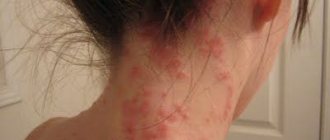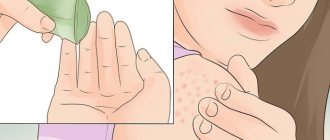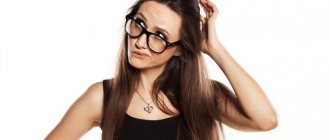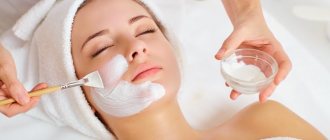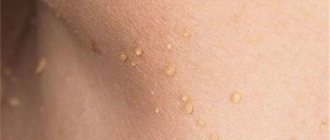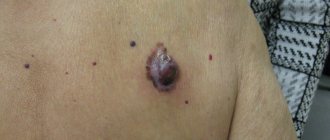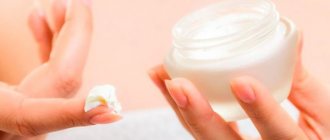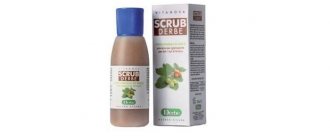Adviсe
- Basic rules for caring for oily scalp
- Nutrition correction
- Correction of hormonal levels
- Traditional methods in the fight against seborrhea of the scalp
- Burdock root decoction
- Oak bark infusion
- Mustard mask
- Kefir-oat mask
Oily scalp causes a lot of trouble and inconvenience for both women and men. Fortunately, this problem can be successfully solved thanks to care products, proper lifestyle and folk methods.
A neat hairstyle and healthy looking hair are an integral part of the appearance of a successful person. But not every one of us can boast of gorgeous hair. Those with oily scalp have a hard time: their hair becomes oily, looks untidy, and suffers from oily seborrhea and dandruff. You have to wash your oily hair every day. Sometimes by the evening the head looks untidy, itching and flaking of the skin bothers you. If you do not respond in time, the condition can develop into chronic seborrhea, which is difficult to treat.
Excessive sebum production is associated with increased activity of the sebaceous glands. Oily seborrhea of the scalp, dandruff and increased oiliness of the hair can spread to the face and other areas of the body. This condition occurs during adolescence due to the process of puberty, but can persist into adulthood. Then the problem needs to be solved comprehensively, affecting the skin from the outside and from the inside. To objectively assess the condition of the scalp, it is better to seek help from a trichologist.
If the scale of the problem is small, then you can try to cope on your own. The main task is to establish the reason why the problem of oily hair arose. If this is a consequence of diseases of the internal organs, then after treatment of the disease the consequences on the skin and hair will go away on their own.
The health of the scalp is influenced by many factors; here are the common causes of seborrhea and oily scalp:
Poor diet, drinking alcohol, smoking; Hormonal disbalance; Impaired metabolism; Abuse of styling products, hair dryer, hair iron; Incorrect hair care cosmetics.
What is the essence of the problem
Oily skin is the result of an increased level of activity of the sebaceous glands on the scalp. This process is provoked by various reasons:
- failure of the hormonal system;
- metabolic dysfunction;
- wrong lifestyle;
- chronic stress and pathological fatigue.
In addition to internal problems in the body, such a pathology as oily scalp can also be caused by a combination of external factors:
- excessively hot weather;
- environmental situation in the region of residence;
- increased air humidity;
- improper care of the dermis.
Incorrect functioning of the sebaceous glands in combination with an associated bacterial infection leads to a disease such as seborrhea.
Causes
Attention. Very oily facial skin is accompanied by enlarged pores, which often become clogged and blackheads form in places.
Causes of excess fat:
- unhealthy diet (including a large amount of sweets, fatty or spicy foods in the diet);
- heredity;
- bad habits (drinking alcohol, smoking);
- frequent nervous tension or stressful situations;
- neuropsychic overload, nervous breakdowns;
- improper or irregular facial skin care;
- lack of proper skin hygiene (excessive use of foundation, cosmetics not removed from the face on time);
- disruption of the gastrointestinal tract.
In addition, the environment can also influence the occurrence of seborrhea; if the air temperature rises, the sebaceous glands begin to work more actively, which can provoke increased sebum secretion.
Causes due to hormones, endocrine system
Main reasons:
- Hormonal imbalance in the body is expressed in disruption of the hormones androgen and estrogen. If the level of the hormone androgen in the body is increased, then uncontrolled formation of sebum occurs. In women, seborrhea occurs due to an imbalance in the ratio of the hormones androgen and progesterone.
- Endocrine diseases. These are problems with the thyroid gland, the functioning of thyroid hormones, diabetes mellitus.
Symptoms
The main symptoms of oily seborrhea are:
- increased oiliness and stiffness of hair;
- discomfort accompanied by severe itching;
- inflammatory process of the sebaceous glands;
- increased hair loss;
- Hardened crusts form on the stratum corneum.
Signs of a problem
It should be noted that dermatologists distinguish two types of the disease: oily and dry seborrhea. “Each type of disease is accompanied by a characteristic clinical picture.”
Symptoms of dry seborrhea include:
- dandruff (peeling of the dermis of the head due to activation of local bacterial microflora);
- the appearance of acne vulgaris.
The main signs of oily seborrhea are:
- There is increased fat content in the dermis of the head and face (forehead, nose, chin);
- the structure of oily scalp resembles a crust;
- oily strands, areas of baldness appear.
There are several forms of seborrheic dermatitis that affects the dermis of the scalp:
- inflammatory - the skin turns red, itches, the lesions extend far beyond the hair growth line, covering the forehead;
- dry dandruff, peeling of the scalp. Hair does not become oily as intensely.
- Steatoid dandruff (oily seborrhea) - large yellow scales appear at the roots of the strands, the curls stick together, the scalp and the hair itself become oily very quickly.
Characteristics of oily hair
Oily hair type is distinguished from others by the following characteristic features:
- unkempt appearance;
- greasiness;
- unhealthy oily sheen;
- rapid contamination (several hours after washing);
- do not hold styling;
- absorb odors.
Oily hair is often accompanied by problems such as dandruff, hair loss and problematic facial skin.
Reference! Mixed hair has oily roots and dry, damaged ends.
How can a doctor help?
There are a number of traditional methods that can be used to get rid of oily seborrhea. It is necessary to deal with the problem only after consultation with an experienced specialist.
Here are the basic medical recommendations for owners of oily scalp:
- nutrition correction - preference should be given to fermented milk products, eggs, vegetables and fruits, cereals;
- You can combat the problem by giving up salty, spicy and sweet foods;
- Those with increased oily scalp are advised to regularly take zinc supplements. As well as vitamin complexes (A, D, E, B);
- in some situations, in order to get rid of seborrhea, it is necessary to undergo complex hormonal therapy;
- pathologies of the gastrointestinal tract should be examined and, if necessary, treated;
- you can fight the disease with the help of medications for external use (lotions, ointments, serums, gels, sprays);
- in severe and advanced conditions, the dermatologist prescribes systemic antifungal drugs.
Effective physiotherapeutic procedures help get rid of increased oiliness in the dermis of the head. Here are some of them:
- sedative technologies;
- bactericidal techniques.
- Mesotherapy – microinjections of medicinal preparations into the skin.
- Immuno- and hormonal-correcting procedures.
- Mil - therapy (impact on the sebaceous glands using a laser).
- Ozone therapy - the effect of this substance has a positive effect on the condition of the scalp and hair.
Treatment options
Treatment of oily seborrheic dermatitis of the scalp is complex. It includes the use of drugs, cosmetics, and dietary recommendations.
Only this approach provides effective therapy for the disease.
Medicines
To eliminate oily seborrhea, patients are prescribed to take Ketoconazole orally. This is an antifungal agent that eliminates the signs of oily seborrhea. The drug is taken once a day at a dosage of 200 mg. The average duration of use is 2-3 weeks.
In addition to Ketoconazole, zinc - for example, Zinocap. It helps eliminate flaking.
Salicylic acid lotions can be applied to the affected skin up to 3 times a day . The duration of use of this procedure is up to 7 days. Salicylic acid eliminates skin oiliness, fights pathogens, and reduces the severity of itching and inflammation. In addition, the drug normalizes the functioning of the sebaceous glands.
In some cases, patients require sedatives . Typically, herbal remedies are used (Palora, Sedamed), but medications with a more pronounced sedative effect can be used - Afobazol, Stimuloton, Grandaxin. Sometimes psychotherapy is required.
Shampoos
To treat the disease, special shampoos are used. Doctors recommend products containing ketoconazole - Sebozol, Mycozoral. Shampoo with ketoconazole of any brand has an anti-inflammatory effect, effectively fights fungi, eliminates itching, and normalizes the functioning of the sebaceous glands.
The average duration of use is 1.5-2 months, frequency of use is up to 3 times a week.
with zinc , to which birch tar can be added, show good results They dry out the skin, normalize sebum production, and eliminate itching. In addition, they destroy pathogenic fungi and wash the scalp well.
The frequency of use is the same as for shampoos with ketoconazole, the duration is until the symptoms of the disease are eliminated. An example of such a remedy is Cynovit.
There are also other shampoos that are used as auxiliaries to the main cosmetic preparations - Ecoderm, Tar 911. They have an exfoliating effect and effectively wash away dirt from the scalp.
Physiotherapy
Physiotherapy helps improve blood flow and metabolism in the affected area, improves the functioning of the immune system. In addition, the skin is cleansed and the functioning of dermal cells improves.
Be sure to read:
5 important components of the treatment of dry seborrhea of the scalp
For seborrhea, the following procedures are used:
- electrophoresis with zinc;
- darsonvalization;
- ultraviolet irradiation.
Steam cleansing is used a little less frequently.
Cryomassage of the scalp is also used, which helps stimulate blood flow and metabolism in the affected area. In addition, this procedure improves oxygen delivery to tissues.
Reviews about treatment with physiotherapy are only positive.
Diet
Complete treatment of oily seborrhea of the scalp is impossible without following dietary recommendations. You should increase the amount of foods with vitamins A and E in your diet - vegetables and fruits (especially carrots), nuts, liver, lean meats and fish, and seafood. Various cereals, hard cheeses, and cottage cheese are useful. It is important to drink 1.5-2 liters of clean water daily.
It is advisable to remove chocolate, sweets, spices, fatty and fried foods, and canned food from the diet. You also need to stop smoking and drinking alcohol.
Folk remedies
Treatment of oily seborrhea of the scalp with folk remedies can be carried out as an addition to the main therapy and only after consulting a doctor.
Most often they use lotions made from a decoction of oak bark . To prepare it, you need to pour 25 g of oak bark into 500 ml of boiled water and boil for an additional 5 minutes. Cool the mixture, then apply to the affected skin for an hour. Then you should wash your hair with a special shampoo. Usually 10 receptions are enough.
A decoction of sage is also effective . A tablespoon of the plant is poured with 200 ml of boiled water, then kept in a water bath for 15 minutes. The mixture is cooled and filtered. The scheme of use and duration of use are the same as for oak bark decoction.
Sebiprox for scalp dermis
This medicated shampoo, which contains ciclopiroxolamine, helps get rid of the problem of oily skin in a short time. Clinical effect:
- has an active antifungal effect;
- has anti-inflammatory properties;
- has exfoliating functions, cleanses the scalp of dead particles of the dermis;
- has an antibacterial effect.
It is recommended to use this shampoo only after consultation with a dermatologist.
Why oily scalp is a problem
Oily seborrhea of the scalp: treatment
This condition can with full confidence be considered a serious problem, especially for those men and women whose appearance is of paramount importance to them. But appearance is only one side of the coin; what is much more important is that increased oiliness in hair is not just a condition, but a “call” from the body that notifies you of its problems.
Important! If the level of hygiene is high, cleanliness and regular hair care are maintained, but your hair still constantly looks unkempt, then most likely this indicates the presence of some kind of disease. It is not always easy and quick to cure.
Dust settles in large quantities in a thick layer on oily strands. When hair sticks together, it becomes heavier and fat can clog pores. This leads to limited access of oxygen to the roots. As a result, the hair follicles may become weak and will not be able to hold the hair tightly, so hair loss may begin, even to the point of partial or complete baldness. In difficult cases, metabolic processes are suspended, itching and dandruff appear, seborrhea can sometimes occur, and pimples appear on the face.
Care - to help
How to reduce the oiliness of the dermis and strands through the correct selection of cosmetics and procedures? First of all, you need to purchase shampoos intended for daily use. This product should not contain lanolin or silicone.
It is recommended to avoid “universal” products - conditioner and shampoo in one bottle.
When washing your hair, you should also follow some rules:
- the maximum amount of shampoo is applied to the roots of the strands, but the ends should be treated to a minimum;
- balms must be selected for brittle and dry curls - they should be applied directly to the ends of the strands, avoiding the roots of the hair.
Additional tips for those with oily scalp:
- after washing your hair, you can rinse your strands with a solution of lemon juice;
- It is necessary to comb your hair as little as possible, because during this procedure, excess fat is distributed along the hair shafts and even ends up on the forehead;
- You should not overuse styling products; you should reduce the frequency of using a hair dryer and other devices for heat treatment of curls.
Traditional therapy
You can treat seborrhea and care for oily scalp using effective home recipes. Here are examples of the most effective of them:
- You should grind the oak bark to a powder state, then pour boiled water into the product (proportions - 1:5). The composition is boiled, infused for 30 minutes, and filtered thoroughly. The finished mixture is enriched with a tablespoon of honey, stirred and rubbed into the roots of the strands, and applied to the forehead. Wash off after 15 minutes.
- You can fight the problem with the help of the following herbal mixture: burdock root, calendula, immortelle, St. John's wort and corn silk are poured with boiling water in equal parts (two large spoons of the mixture - 200 ml of liquid), boiled in a steam bath, infused, filtered. It is recommended to do procedures with this remedy daily until the symptoms of the disease disappear.
- At home, you should make onion broth: wash two large spoons of onion peel thoroughly, pour in the same amount of boiling water, cook over low heat for 30 minutes, filter. It is necessary to combat increased oiliness of the dermis and strands daily by applying a prepared decoction to dry, clean hair.
Homemade ointments
You can combat the problem with the help of effective medicinal mixtures prepared independently from available ingredients:
- The juice of half a lemon is combined with two chicken yolks, and a few drops of burdock oil or castor oil are added to them. The composition is applied to the dermis of the head and forehead half an hour before washing the hair.
- You can also make this mixture: combine liquid honey and sour cream. Aloe and lemon juice, add castor oil to the ointment (the components are taken in equal quantities). The mixture is enriched with garlic pulp (no more than 2 cloves). Use the medicinal composition as a mask - apply to the roots an hour before washing your hair.
- Those with dry hair are recommended to make the following mixture: combine a tablespoon of castor and olive oil, add half a glass of lemon juice. The dermis of the head and forehead are treated with the composition 30 minutes before using shampoo.
Correction of hormonal levels
Skin problems are associated with metabolic disorders and hormonal imbalance. Women may have problems with the ovaries or adrenal glands. In this case, you need to make an appointment with a gynecologist and endocrinologist to conduct the necessary studies.
Recommendations for treatment should only be given by a doctor. Perhaps, after correcting hormonal levels, the problem of oily hair will go away on its own.
Preventive actions
In order not to have to deal with the problem of increased oiliness in the dermis of the scalp for a long time, you need to follow some simple rules:
- You should use only suitable cosmetics (their choice is determined by the type of seborrhea);
- It is worth regularly enriching the body with minerals, vitamins, amino acids;
- it is necessary to treat gastrointestinal diseases and infectious pathologies;
- It is recommended to follow a diet and exercise;
- bad habits also negatively affect the condition of the dermis, so it is better to give up nicotine and alcohol completely.
Increased oiliness of the scalp is a fairly common problem, the causes of which can be varied (hormonal imbalance, metabolic dysfunction, improper care).
Traditional remedies help to cope with the situation - medicinal preparations and procedures, as well as homemade caring masks.
It is necessary to begin treatment for seborrhea only after consultation with a dermatologist (trichologist).
Which doctor should I contact for seborrhea?
If you suspect you have oily seborrhea, get ready to visit several doctors at once:
- a dermatologist (first of all, the choice of subsequent doctors depends on his verdict);
- endocrinologist;
- gynecologist;
- neurologist.
Remember, if you let the problem take its course, you put yourself at risk of developing the following, more dangerous diseases:
- Boils, folliculitis, pyoderma - as a secondary bacterial infection.
- Suppuration and long healing of injuries and scratches.
- Pink coals or rosacea.
- Seborrheic eczema.
- Papillomas or senile warts .
Important! Do not try to diagnose yourself and choose treatment on your own. Therapy should be based on medical recommendations !
Have you determined why you have oily hair?
Not really
